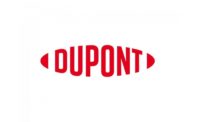“The polar ice caps are melting.”
“Use energy efficient lightbulbs.”
“Buy hybrid cars.”
These are the statements that would run through my mind when I used to think of climate change. Whether we’re referencing the Paris Climate Accord or the Green New Deal, the conversation on climate change has come a long way from those melting ice caps. We hear optimistic plans and measures under consideration that go far beyond those energy efficient lightbulbs. Unfortunately, when it comes to pointing fingers and passing blame, the real estate industry is targeted as a chief offender.
It’s commonly agreed upon that buildings contribute about 40 percent of the world’s carbon emissions. As we acknowledge and address the negative effects on the climate, it’s time to look for solutions from within the existing construction industry, rather than trying to reinvent the wheel. Green building and energy efficient technologies not only exist but some of the most effective solutions might also be the most economical.
“Use Less”
Before determining where we’re going, we have to look back at how we arrived at this place. A chain of events following the 1973 oil crisis would set in motion the start of a push for energy efficient alternatives. The cost of oil rose roughly 300 percent by 1974, the stock market crash ended that December, and the American public went looking for alternatives to oil.
During President Jimmy Carter’s 1979 “Crisis of Confidence” speech addressing the energy crisis, he encouraged every American to do one thing: simply use less. The speech became a plea for everyone to do their part which the President followed by adding water tank-heated solar panels to the roof of the White House. It was also during this period that EIFS gained popularity throughout the United States after being introduced in 1969.
In 2007, an EIF system was included in a series of tests conducted by the National Institute of Science and Technology (NIST and Lippiatt) that among other things, explored the environmental and economic sustainability of building options. These answers provided assistance to things we already know about buildings; such as according to the U.S. Department of Energy 39 percent of energy leakage occurs through a building’s walls. Or that 40 percent of energy spent is on heating and cooling a building. The common goal of improving our nation’s building stock and its energy performance should be simple—and it can be.
It comes as no surprise that In October 2013, the U.S. Department of Energy mandated that all states update their commercial building code to at least meet ASHRAE Standard 90.1-2010. A primary takeaway was the mandate tied to continuous insulation on all new construction and new construction in existing buildings. The effort to address energy leakage was underway, and the easiest solution was again EIFS. By definition, continuous insulation is a continuous layer of insulation that wraps a building helping to reduce air leakage.
Building Solutions
When it comes to the study conducted by the National Institute of Science and Technology, there are many additional highlights that show EIFS as the green building solution.
For starters, the transportation of materials includes tractor-trailer trucks. The heavier the material, the more trips that are needed. In fact, EIFS requires 16 times less trips than brick and six times fewer than stucco, when moving 25,000 square feet of material.
When you consider the whole picture, the global warming impact and carbon footprint of EIFS is three times smaller than stucco and five times smaller than brick.
Additionally, it’s EIFS that’s more energy efficient than the next best performing cladding. EIFS and its layers are designed for high performance.
As we head into 2021, the construction and real estate industries will once again be looking for solutions for energy efficiency rather than reasons to lose optimism. It’s this precise reason why a system like EIFS should receive more than just a brief look—it demands greater attention.
Is it possible that EIFS is better for the environment than other competitive exterior cladding options? It’s not just possible, the answer is a resounding yes. In the February 2013 issue of Walls & Ceilings, Chris Dixon wrote: “Energy efficiency was the reason EIFS was first developed and this continues to be one of its greatest strengths.”
In the November 2016 issue of W&C, Tim Rogan wrote “EIFS, Here to Save the Day,” which is exactly what the industry is primed to do once again. While the energy efficiency benefits of EIFS are rarely called into question, it’s the long-term benefits to our climate that can’t be denied.
When it comes to solving issues of today rather than reinventing the wheel and focusing attention on new technologies, we should look to the systems and technologies that have already been tested. Whether it’s for green alternatives, trying to curb carbon dioxide emissions, or just need a building that saves on energy bills, EIFS provides the exact solutions many strive to achieve.










Report Abusive Comment